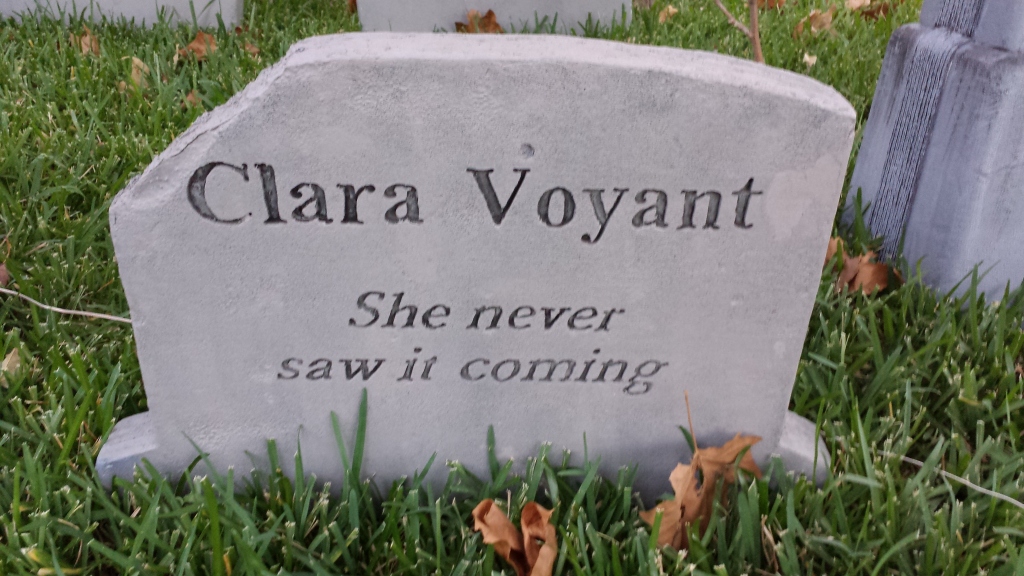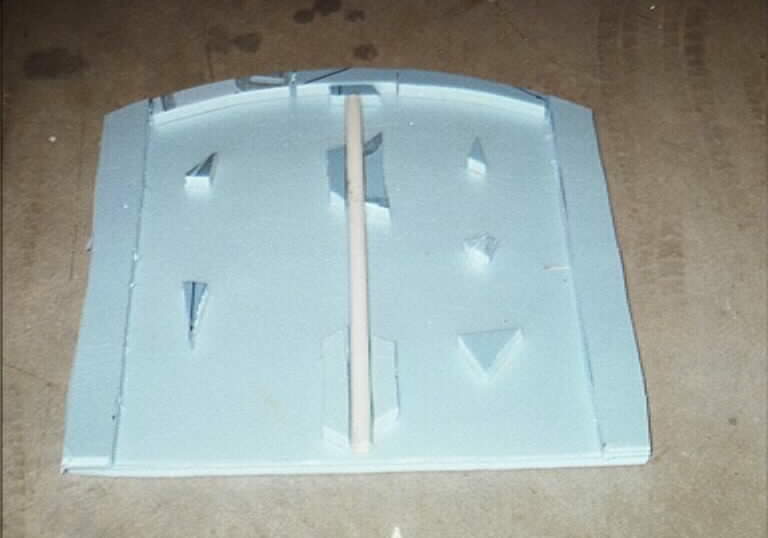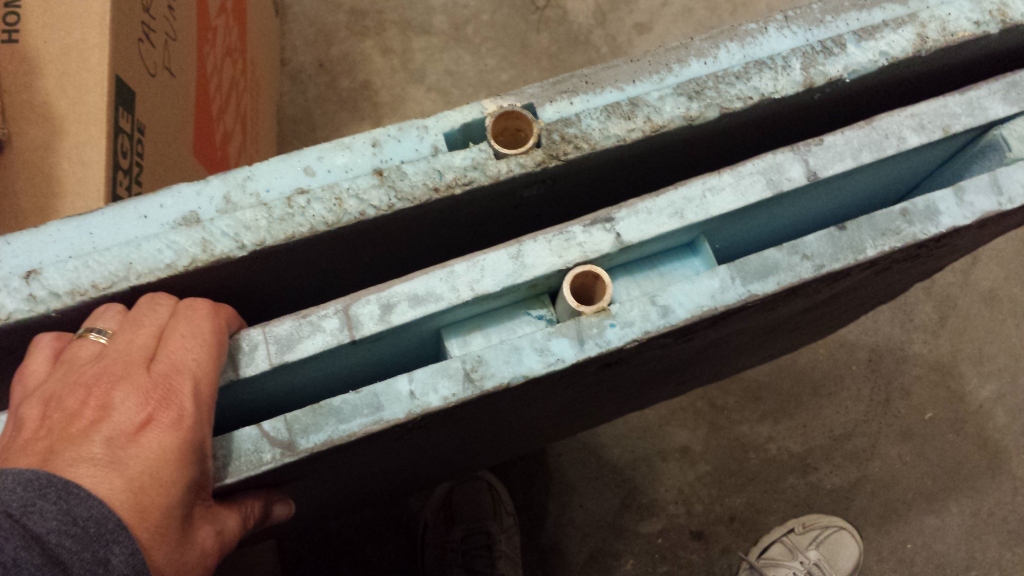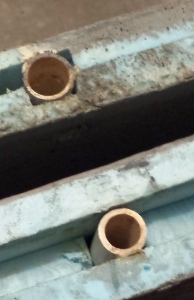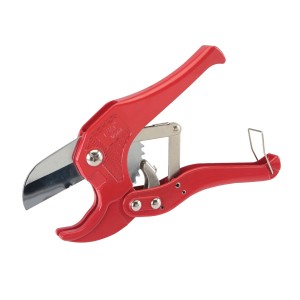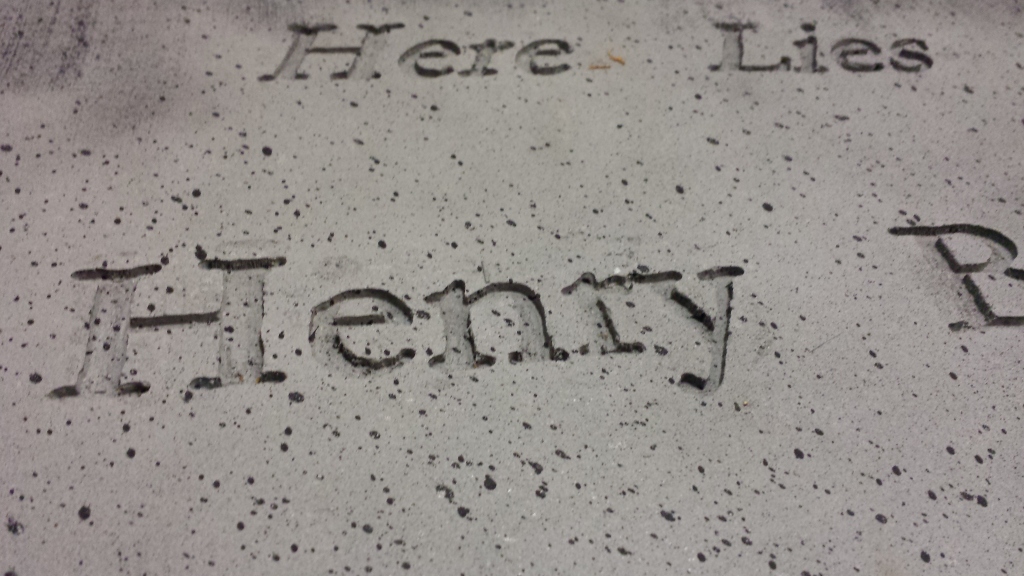The question I’m most asked is “How do you make your tombstones?”
Actually, I’m most asked “Where do you store all this stuff?” (in the attic above the garage), and “Why does your wife put up with you?” (She loves me, as challenging as that may be). But a close third-place is people asking about the tombstones.
So lets take a look.
The tombstones are made mostly from insulation foam purchased from local home-improvement stores. The most common type I use is EPS (extruded polystyrene) foam. These come in large blue or pink sheets. On occasion I will also use XPS (expanded polystyrene) foam, just beacuse I’ve salvaged some from packing material. XPS foam is the kind that leaves tiny annoying little white beads all over the place when broken.
To cut the foam, I have used: an old steak knife, a snap-blade utility knife and a hot wire foam cutting tool. Anything with a long thin blade will work well. The thinner the blade, the easier it is to cut curves. A hot wire tool (from hotwirefoamfactory.com) works for detail, but cuts very slow.
Here in Texas, the thickest EPS foam you can usually find is 3/4 inch thick, so I cut my foam to shape and use 2-3 layers to make my tombstones. Any sort of exterior glue would work. I’ve used wood glue, Liquid Nails for foam, and Gorilla Glue. Personally I prefer Gorilla Glue. It expands as it cures (follow the directions and spritz it with water), which helps fill in gaps. And any Gorilla Glue that leaks out is carve-able.
Here you can see how I layer 2 and 3 layers for different tombstones. I insert a section of 1/2 inch PVC pipe inside the tombstone for mounting over either steel reinforcing bar (‘rebar’), or a wooden dowel in the yard.
Lets discuss PVC pipe for a moment.
You can use either thin wall irrigation pipe, or the thick wall “Schedule 40” pipe. Irrigation pipe is cheaper but usually comes in really long lengths (20 feet) and may be hard to find. Thick wall pipe is slightly more expensive, but can be found in shorter lengths (10, 5 or 3 ft). Note: “1/2 inch” pvc pipe is actually a little under 7/8 inches on the outside. That “1/2 inch” refers to the interior diameter in the thick wall pipe used for higher pressure applications.
In the picture above, you can see the thin-wall irrigation pipe at the top and the Schedule 40 pipe at the bottom.
And what the heck is “Schedule 40”? The schedule number refers to the amount of pressure the pipe can withstand. I have no idea why the word “schedule” is used since it bears no relationship to the way the rest of us use that word (plane schedule, train schedule, etc). Those wacky plumbers!
You can cut thick wall PVC with a hacksaw, and thin wall PVC with a utility knife (and a reasonable amount of effort). But do yourself a favor and get a PVC pipe cutter. They cost less than $10 at your local home improvement store and will save you a lot of time and aggravation. This is what they look like:
Once the tombstones is glued together, I carve the epitaphs. To do this, I use a Dremel rotary tool, a 1/8 inch router bit, and a drywall cutting attachment. The attachment helps to keep the tool perpendicular to the foam. You can use a router attachment, but they are expensive and unnecessary for such light cutting.
I print the lettering onto plain paper (I changed the font color to gray, just to save a little ink). Then I glue the paper to the tombstone. Here’s the trick : use Krylon Easy-Tack temporary spray adhesive. It doesn’t bond permanently (kind of like a Post-It note). I use a Dremel tool with a 1/8″ router bit and a drywall cutting attachment to carve out the lettering.
It takes a bit of practice to learn to approximate the shape of the letters when you can’t make all the sharp corners with the round router bit. And you need to carve in short sections, since the foam will melt and create little hard balls of polystyrene that can gouge out your foam. But still, its not too hard, and the results are great! Here is a picture of the process from a sign I made (view the original post here: Sign of the Times)
To paint the tombstones, I use gray latex paint. Don’t use spray paint directly on foam! The solvent in the spray paint will melt the foam. Instead, paint first with latex paint. Then you can touch-up with spray paint later. A neat trick with spray paint is to use a large needle to enlarge the hole on the nozzle of a can of black paint. The enlarged nozzle will cause the paint to splatter, giving you an easy way of creating specks of color on the tombstone. You may be able to remove and replace the nozzles, allowing you to switch back and forth, although I haven’t tried that with the newer larger nozzles.
To mount the tombstones in the yard, I push or hammer some 1/2 inch steel rebar into the ground, then slide the tombstone over it.
Check out all my tombstones at the Tombstone Gallery page

